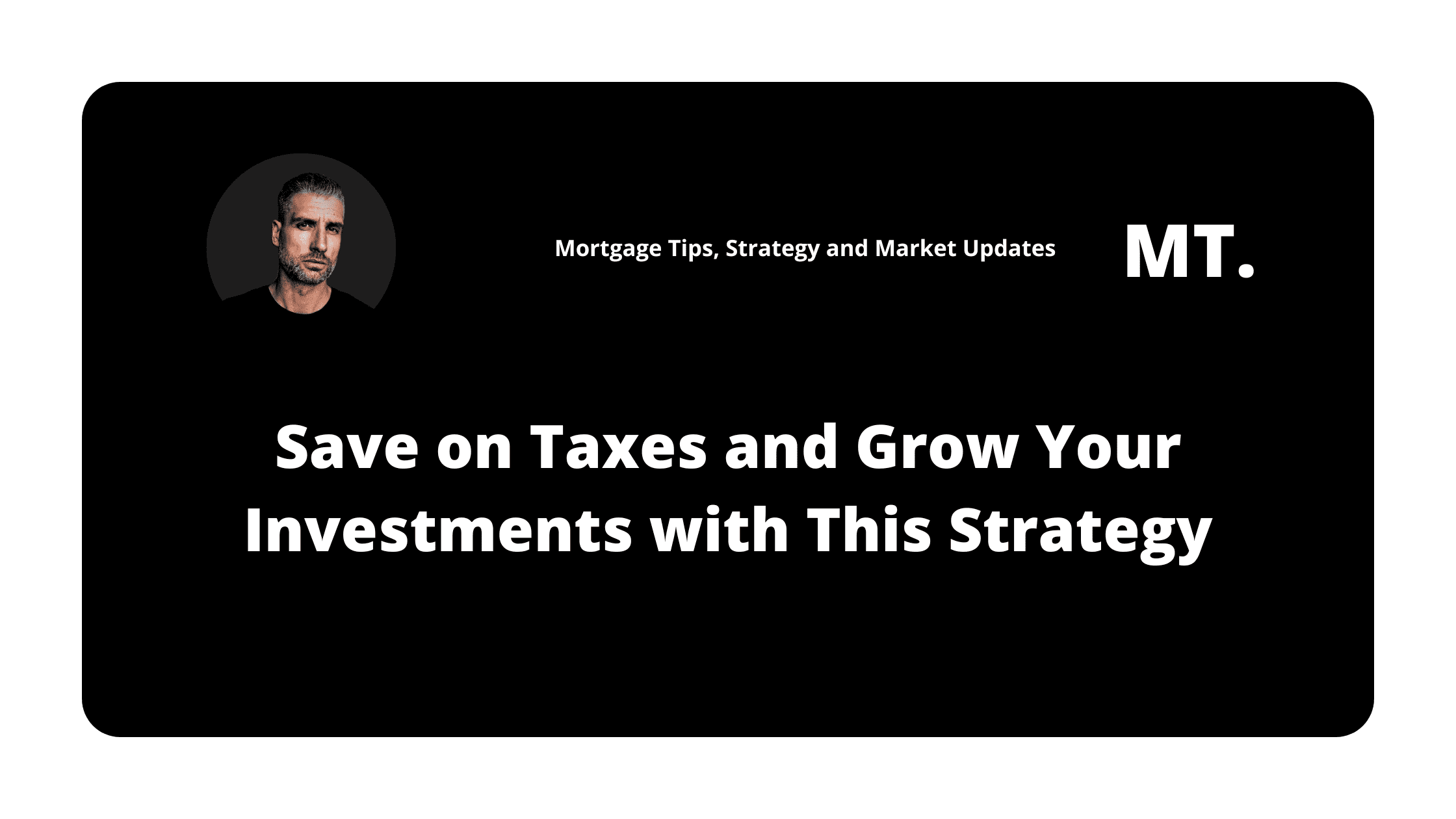Read Time: 3.5 Minutes
Save on Taxes and Grow Your Investments with This Strategy
Your mortgage is likely one of your largest financial commitments, but what if it could also become a powerful tool for saving on taxes and building long-term wealth?
With the right approach, Canadian homeowners can use investments to pay down their mortgage, re-borrow to invest, and turn non-deductible mortgage payments into tax-deductible expenses.
This strategy, commonly referred to as the Smith Maneuver or Debt Swap, allows you to optimize your finances without increasing your cash flow or taking on unnecessary risks.
Now, let’s dive in!
Is Mortgage Interest Tax-Deductible in Canada?
Typically, mortgage interest is not tax-deductible in Canada. However, if you borrow money to invest in income-generating assets like stocks, bonds, or mutual funds, the interest on that loan becomes deductible.
This is the foundation of the Debt Swap strategy, where you use investments to pay down your mortgage and re-borrow to reinvest, making the interest tax-deductible.
Explore more on refinancing your mortgage to enable this strategy.
How the Debt Swap Strategy Works
The Debt Swap involves three key steps:
- Sell Investments: Use existing investments (e.g., stocks or mutual funds) to prepay a portion of your mortgage.
- Reborrow and Reinvest: Reborrow the same amount using a home equity line of credit (HELOC) or refinanced mortgage, and reinvest into income-generating assets.
- Claim Tax Deductions: The interest on the borrowed amount is now tax-deductible, and the tax refunds can be used to further pay down your mortgage.
For a full comparison of HELOCs and mortgages, visit our HELOC vs. Mortgage guide.
The Financial Benefits of the Debt Swap
This strategy creates a snowball effect of financial benefits:
- Lower Tax Burden: Claim annual tax deductions on the investment loan interest.
- Faster Mortgage Paydown: Apply tax refunds to your non-deductible mortgage balance, reducing amortization time and saving on interest.
- Wealth Building: Maintain or grow your investment portfolio while paying off your mortgage.
Case Study – How One Homeowner Saved Big
Consider a homeowner with:
- A $500,000 mortgage.
- $100,000 in liquid investments.
By implementing the Debt Swap strategy:
- They achieved $10,500 in tax and interest savings within the first five years.
- They applied those refunds to the mortgage, reducing their amortization by nearly three years.
- They saved an additional $88,000 in future mortgage payments.
Key Takeaway: This strategy allows you to unlock significant savings while maintaining your current cash flow. To make the most of it, working with an experienced mortgage broker and financial planner is essential. I can provide introductions to trusted partners who specialize in these strategies.
Risks and Considerations
While the Debt Swap strategy has clear benefits, it’s not without risks:
- Market Fluctuations: Investments can lose value, especially in volatile markets.
- Leverage Risks: Borrowing to invest amplifies both gains and losses, so it’s essential to invest in stable, income-generating assets.
- Compliance: Ensure you only claim tax deductions for eligible investments that generate income (e.g., dividends or interest).
Learn more about the risks of borrowing to invest from CIRO’s guide.
Frequently Asked Questions
- Is a mortgage tax-deductible in Canada?
Not typically. However, the Debt Swap strategy can make the interest on investment-related borrowing deductible.
- What types of interest are tax-deductible in Canada?
Interest on loans used to purchase income-generating investments is deductible.
- Is borrowing to invest a good idea?
It can be, but it depends on your risk tolerance and the stability of your investments.
- How risky is leverage investing?
Leverage magnifies gains and losses, so it’s important to invest in stable assets and consult a financial advisor.
- What is borrowing to invest?
Borrowing to invest involves taking a loan (often from a HELOC) and using the funds to purchase income-generating investments.
Take Action Today
To maximize your tax savings and build wealth, consider implementing the Debt Swap strategy.
- Step 1: Use your investments to pay down a portion of your mortgage.
- Step 2: Reborrow using a HELOC or refinanced mortgage to reinvest in income-generating assets.
- Step 3: Claim tax deductions on the interest and accelerate your mortgage paydown with refunds.
Working with an experienced mortgage broker and financial planner is key to implementing this strategy successfully.
If you’re ready to explore this opportunity, I can introduce you to trusted partners who specialize in these financial strategies.
The Debt Swap strategy offers Canadian homeowners a powerful way to save on taxes, pay off their mortgage faster, and grow their wealth simultaneously.
With careful planning and the right guidance, this approach can unlock significant financial benefits without changing your monthly cash flow.
Contact me today to get started and connect with the experts who can tailor this strategy to your financial goals.
Need some advice on if this is the right strategy for you?
Contact me today to discuss how I help you analyze your investment portfolio and mortgage to see if this is a fit for you!
Overview
Subscribe to begin.
Join 7.5k+ subscribers and get tips, strategies and market updates every other Thursday morning.







